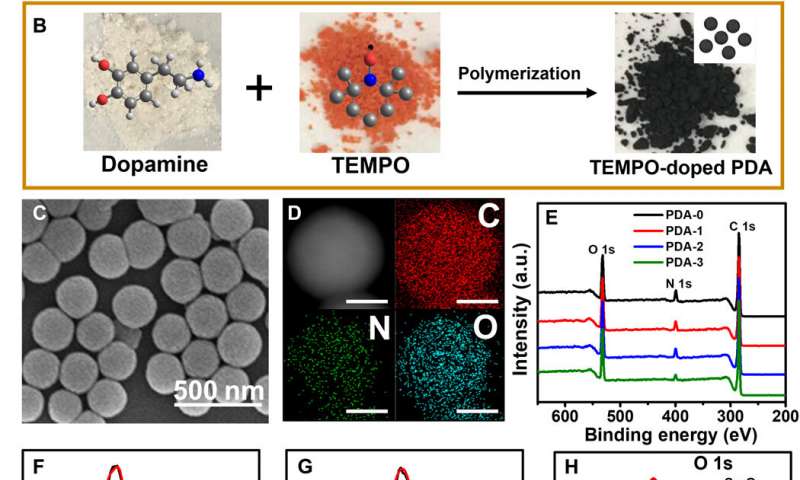Polydopamine (PDA) is an advanced functional material
and its emergent light absorption properties make it crucial for
applications in materials science. However, it is challenging to
rationally design and regulate PDA absorption properties due to its
complex architecture. In a new report, Yuan Zou and a team of
researchers in polymer science, optoelectronic materials and
physical chemistry in China proposed a simple method to regulate
the light absorption behaviors of PDA. To accomplish this, they
constructed donor-acceptor pairs in the microstructures via
connections between specific chemical moieties. They then used
detailed structural and spectral analysis as well as density
functional theory (DFT) simulations to confirm the existence of
such donor-acceptor molecular pairs. The molecular pairs could
decrease the energy bandgap (or energy gap where no electrons
exist) and increase electron delocalization to enhance light
absorption across a broad spectrum. The rational design of PDA
nanoparticles with tunable absorption properties allowed an
improved photothermal effect, which the team demonstrated with
excellent performances during solar desalination. The work is now
published on Science Advances.




